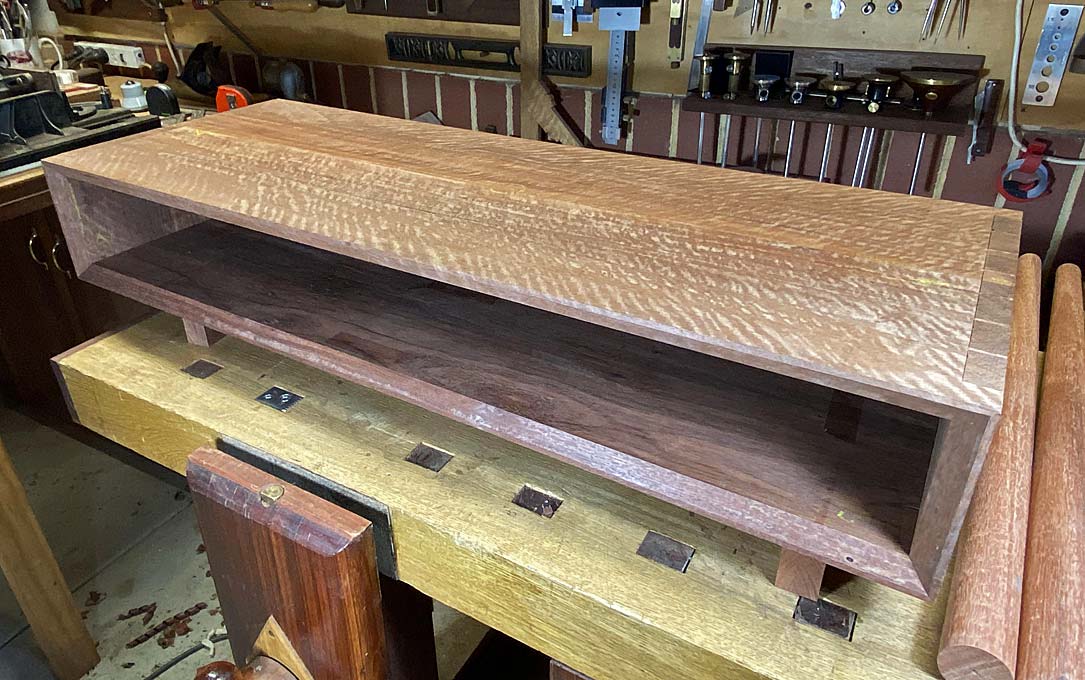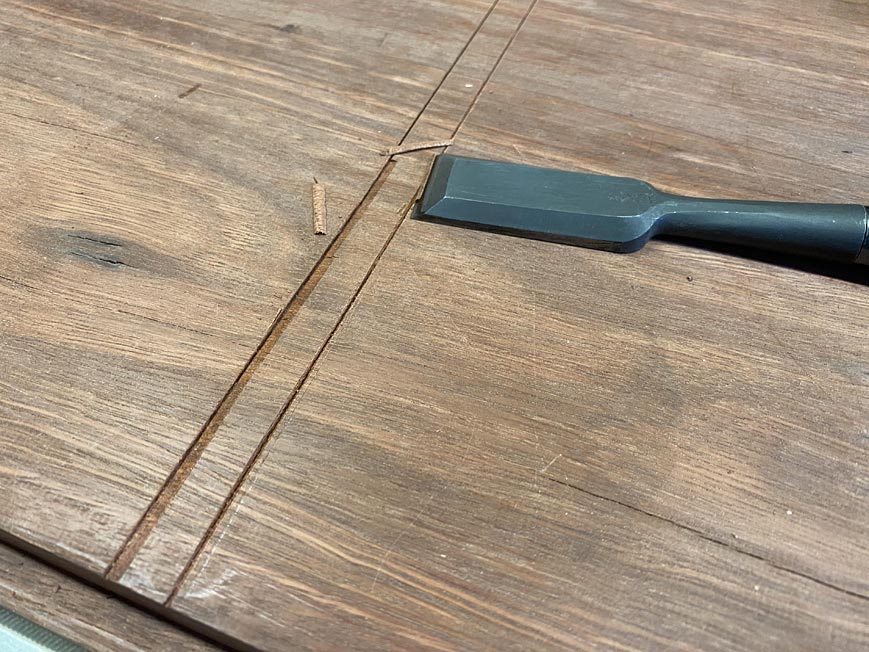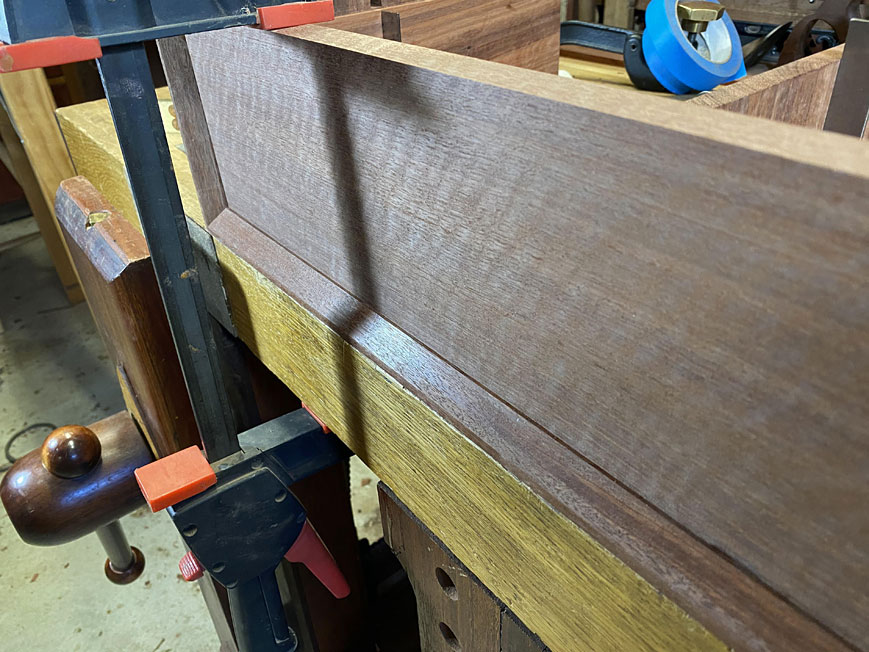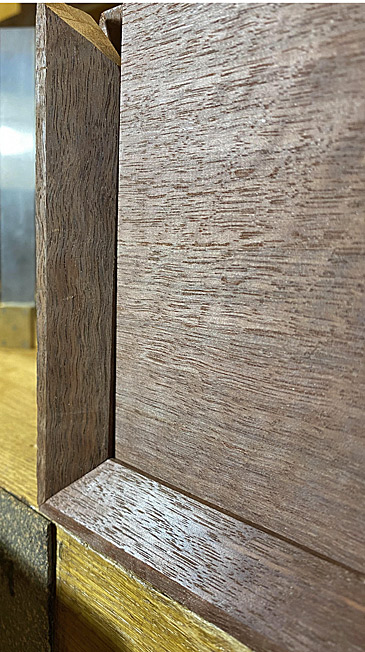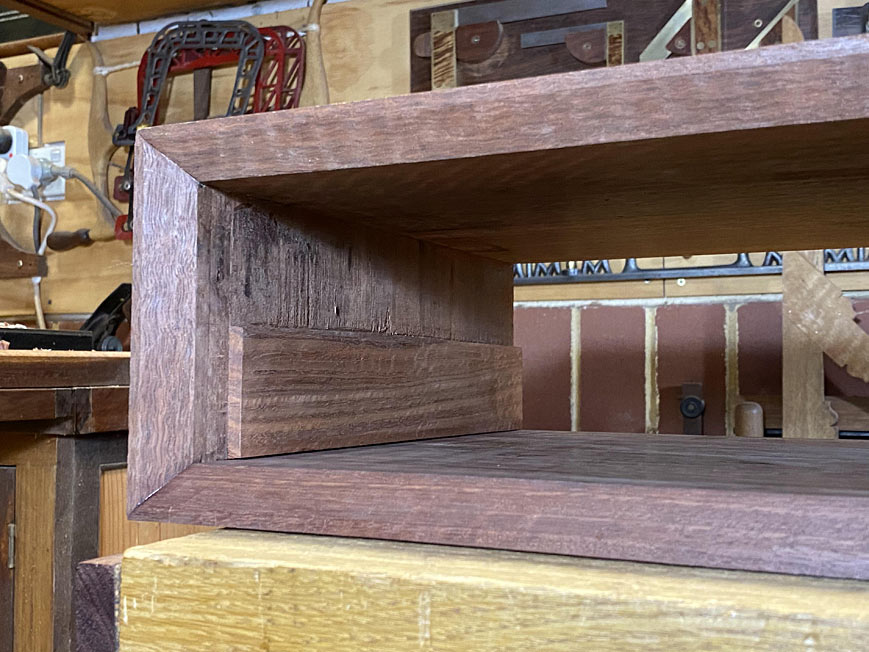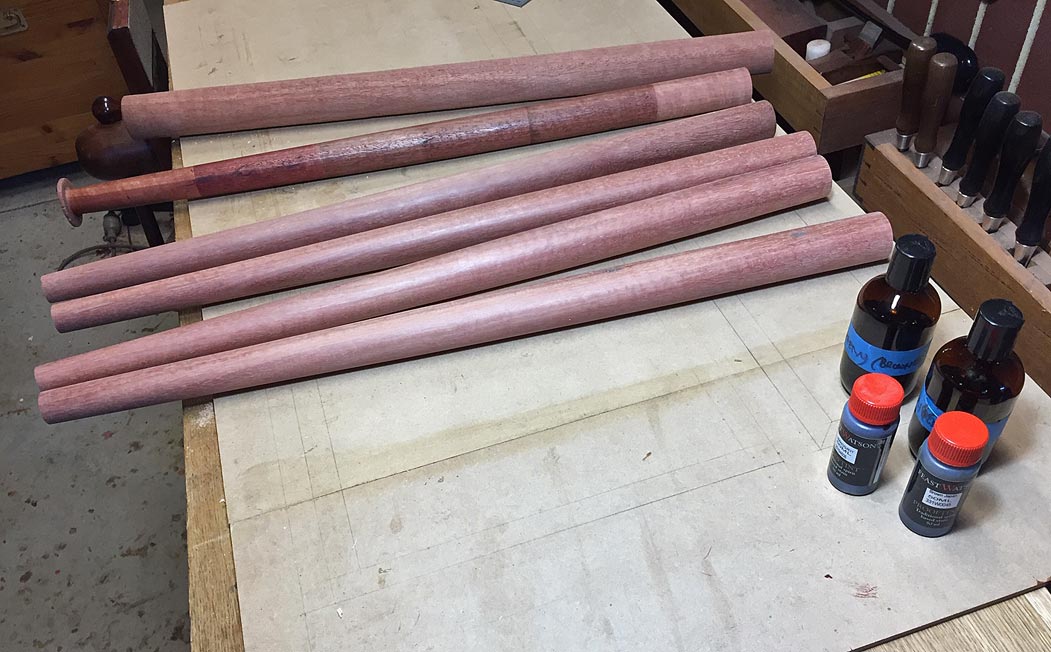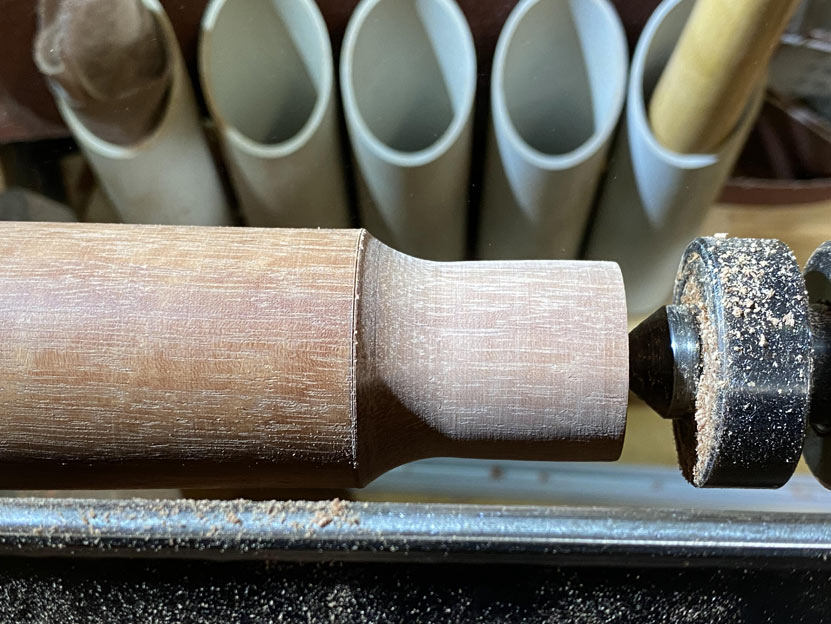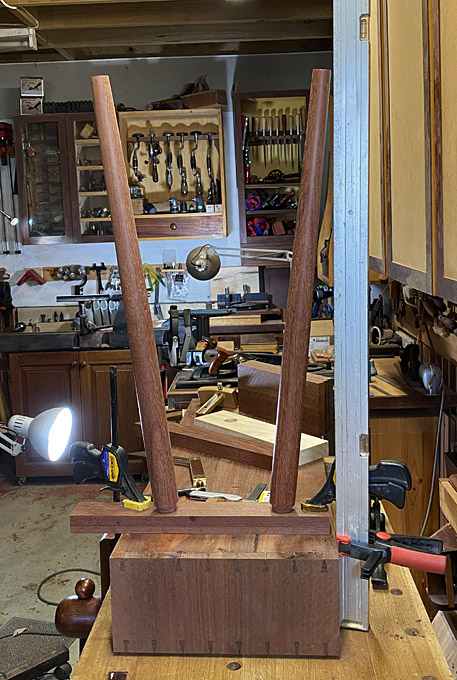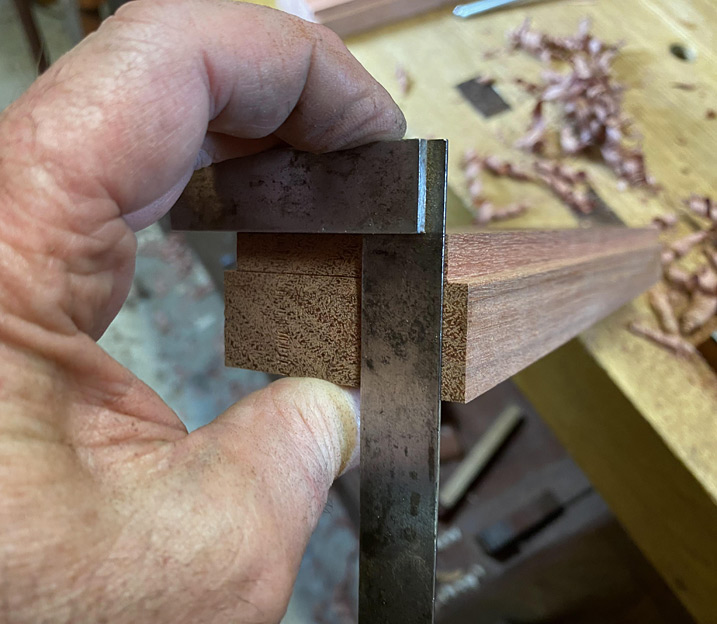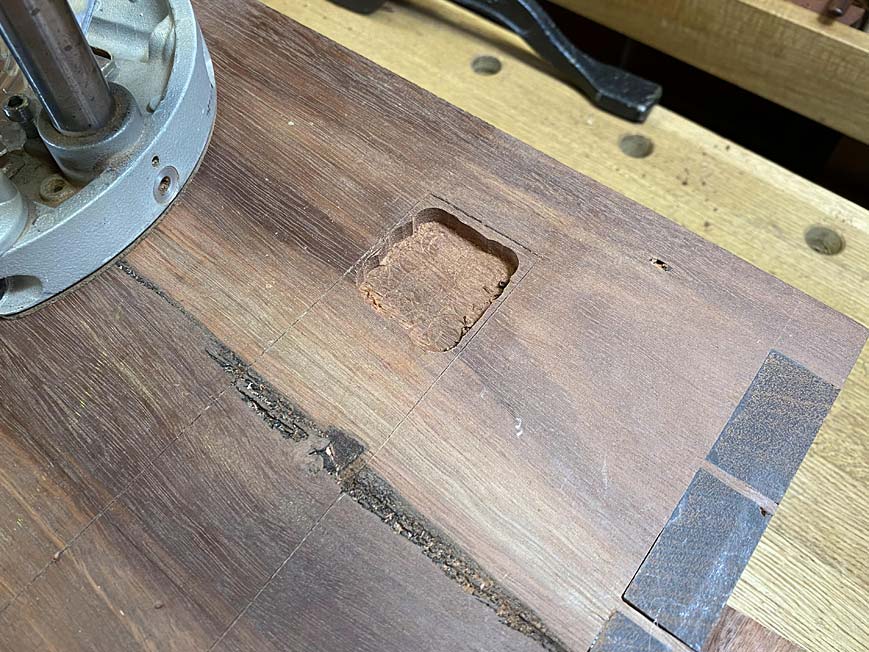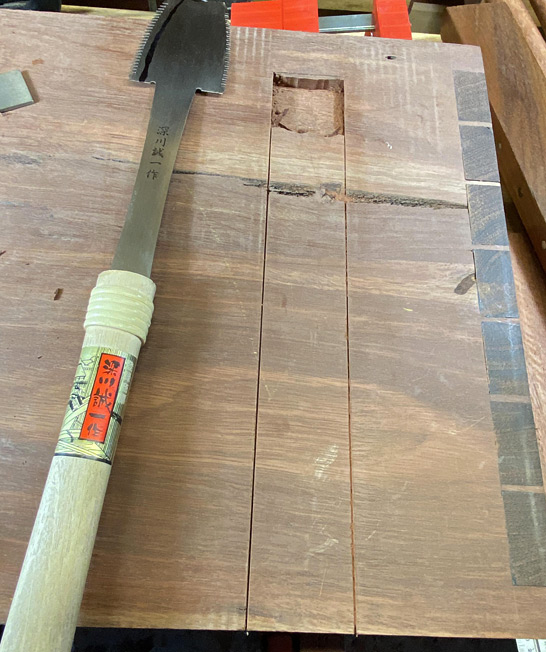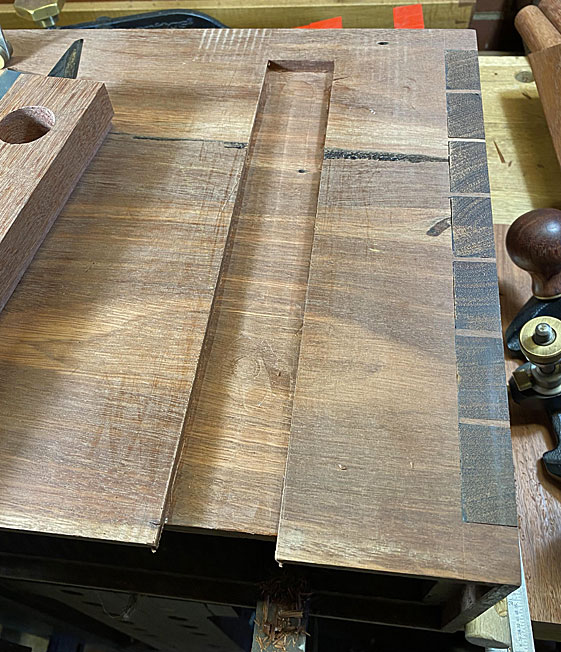As a reminder, we are building a version of this table ...
The plan is to attach the legs, which were made near the start of this project.
The attachment method is by inserting the legs into compound angle mortices in a base, which will be fixed to the carcase with a tapered sliding and stopped dovetail. We don't mess about here!

It will be necessary to do this over two articles, the first being the base for the legs, which will be dovetailed (tails). The second will be the socket (pins) for the base.
Before we begin, I want to mention what I did at the end of the last session. I had replaced the central drawer dividers as the grain ran in the wrong direction. The spacers at the ends also did so, and my response was to cut out half the spacer ...
Well, I fretted over the end spacers, and just could not leave them this way. Encouraged by the way the halves had come out cleanly, I removed the remainder and replaced the spacers with correctly grained versions ...
OK, onto the leg base ...
I spent a while playing with angles for the legs, and finally accepted this (mocked up base) ...
I have drilled angled mortices with a brace on a number of occasions. This time I decided to used a drill press and some Japanese Star-M augers, which are specially designed for this type of work (no lead screws). I built a 10 degree ramp for the resultant angle. The auger is 30mm ...
[
The tenon is straight, but the mortice will receive a slight reaming, and the tenon will be glued and wedged. This is probably overkill since the weight of the case rests on the legs.
These are the bases for the legs. The final prototype is at the rear ...
Drilling the bases ...
The design requires that the legs do not go over the boundary of the case (to avoid tripping over them) ...
This is how they should be ...
There was a small dilemma: The base at one side measures 3" from the end ...
... and the other side measures 1/4" further ...
I could not work out how this occurred. The angles are the same. In fact, I made another set of bases, and the same error showed up again - exactly the same!
So what to do? Actually, the decision was obvious after a little think - make the bases the same. What is more likely to be noticed is if the bases are different distances from the sides. No one will notice a 1/4" difference where the legs hit the ground. So be it.
This is one of the bases for dovetailing ...
First step is to remove a 2mm taper from one side. The taper will be on the inside of the base, with the outside parallel to the side of the case.
Taper line drawn ...
Easiest way to do this is with a #604 smoother ..
This is the one end of the base ...
.. and this is the other end ...
mmmm .... 0.39 mm oversize. What to do ...? I'm kidding

The dovetails will be 7mm deep. A shoulder was planed with a rebate plane ...
The squareness of this rebate is important, so check ...
The dovetail is now to be created, and the preparatory step is to colour the outer edge of the rebate with a sharpie. This will warn that the planing does not lower the external edge of the rebate.
The dovetail is created with a modified Stanley #79 edge plane ...
The fence has a 1:6 ratio wedge ...
Details of this dovetail plane here:
http://www.inthewoodshop.com/ShopMadeTo ... ley79.html
The result of planing. That is a 1:6 dovetail marker ...
So what are the numbers for the taper? This will give an indication of the accuracy of the joint.
One end is 44.12mm ...
... and the other is 46.46mm, which is a difference of 2.34mm.
This will work - the pin socket is measured from this (in the same way as dovetails for a drawer.
The reason for the 7mm depth? The case is 20mm thick. the dovetail should be about 1/3 of this thickness. I decided to take it to the depth of the rebate for the rear panel ...
So, here is one of the completed bases ...
And this is where it will be fitted ...
Regards from Perth
Derek




































